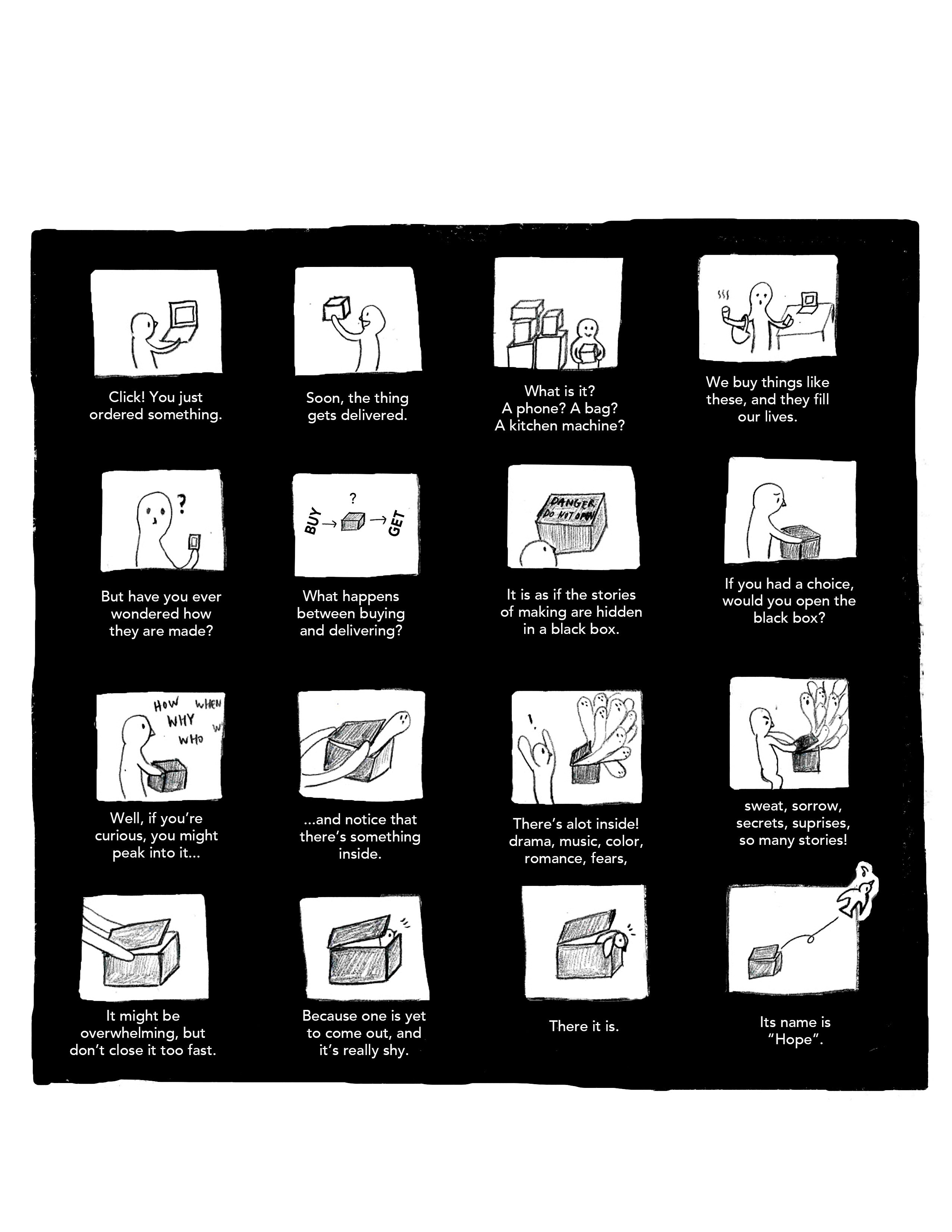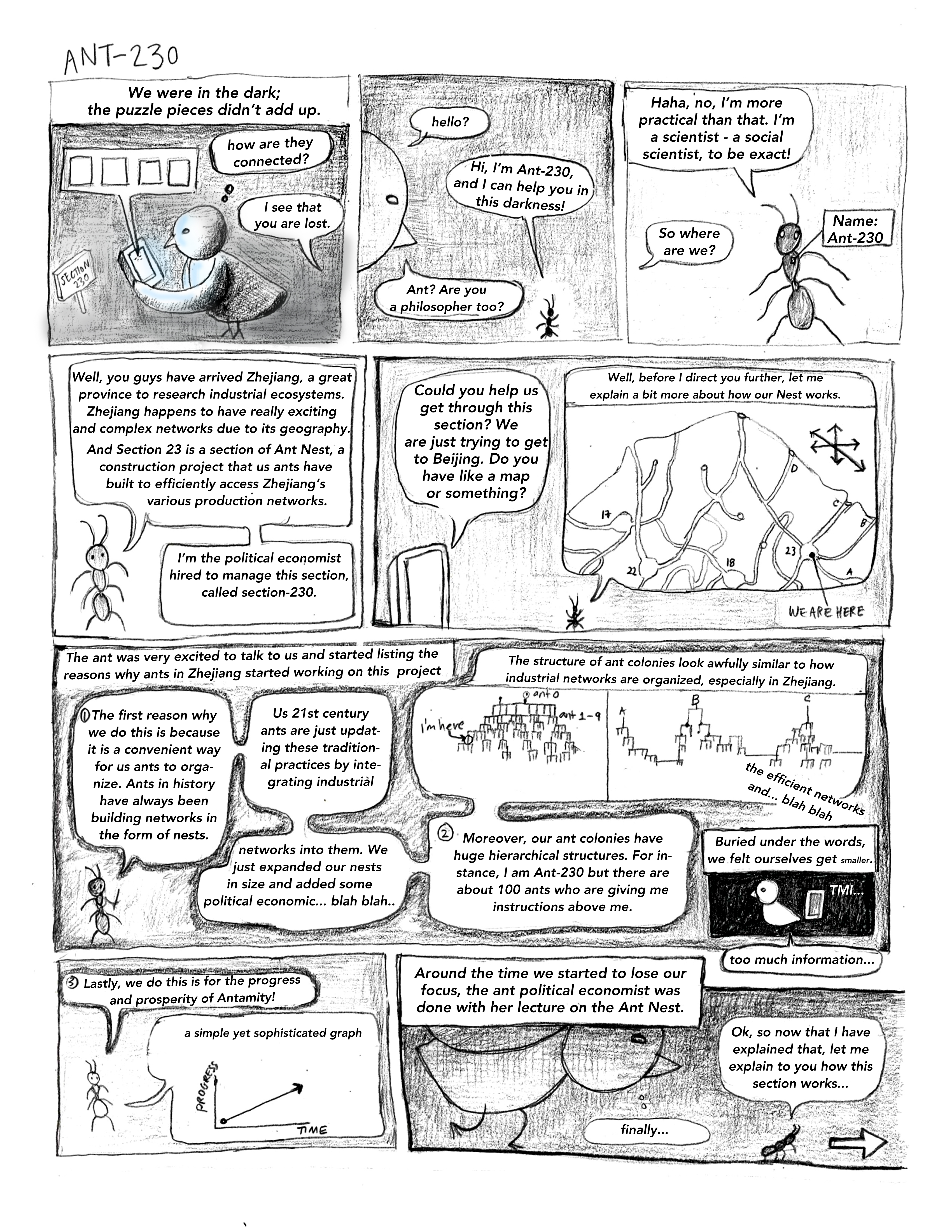The following are excepts from my college thesis Work in Action, which comprised of a graphic novel and a chapter of academic writing. The thesis was advised by Professor Ying Jia Tan and submitted on April 13, 2017.


Imagine ordering a thing – perhaps a phone – perhaps an iPhone. Click! Instantaneously, it arrives, packed inside a spotless white box. The purity of the box gives an air of innocence. The phone itself dons no sign of history beyond the barely visible line, “Assembled in China,” sleekly engraved on its silver back. But assembled, how?
Here, the birth stories of manufactured objects – the chaotic details of its making – are often boxed and pushed out of sight. What replace them are portraitures all too similar: the iron cage, the grid, the panoptic sweatshop of Chaplin’s comedy. We know how this story goes (or stays); the lives of the workers are helplessly dictated by the evil employers who reap profit. Surely there must be some truth here, but something about this story feels just too simple.
In reality, life is, well, much more complicated. Try drawing a grid to see how cluttered it gets; each line assumes unique curves that entangle into a messy matrix. Even if a ruler is involved, perfect grids do not exist in reality. And there is something joyful about this: the peculiar personality of each line, the surprising spontaneity of the bends, the organic mood of the mesh.
In the dominant narratives, following the Marxist narrative, certain pains are boxed and labeled for certain social groups, out of reach for the viewers to empathize with. The conclusion of this story is a dead end: a sense of hopelessness and pity -- yet another excuse to deny responsibility, blame an abstract figure, and disengage.
What do these factories actually look (and feel) like? Who are inside them, and what are their individual stories? How are these stories connected to what we (consumers, academics, activists, or fellow earth dwellers) go through on a daily basis? What should we, you, or I, do? These inquiries look for details, but details, blocked by the facade of simple pictures, are rarely explored.
Work in Action: a Graphic Novel aims to expose the messy stories of Chinese factories and the individuals inside them. Using ethnographic research of factory workers in three major industrial regions in China, Work in Action argues that factories are full of life and movement in two ways. First, the individual workers inside them constantly improvise strategies to expand the possibilities of their own physical and social movement. Second, the factories themselves have a sense of mobility; in response to the rapidly changing demands of the economy, factories constantly and creatively update their physical location, technology, and ways of organization. As a result of their constant moving and shifting, they construct networks full of holes and shadows that allow room for further individual mobility. From here, we can zoom out and see how we -- anyone who exists in this world -- are also entangled inside the same network, economically, environmentally, and beyond.🧃